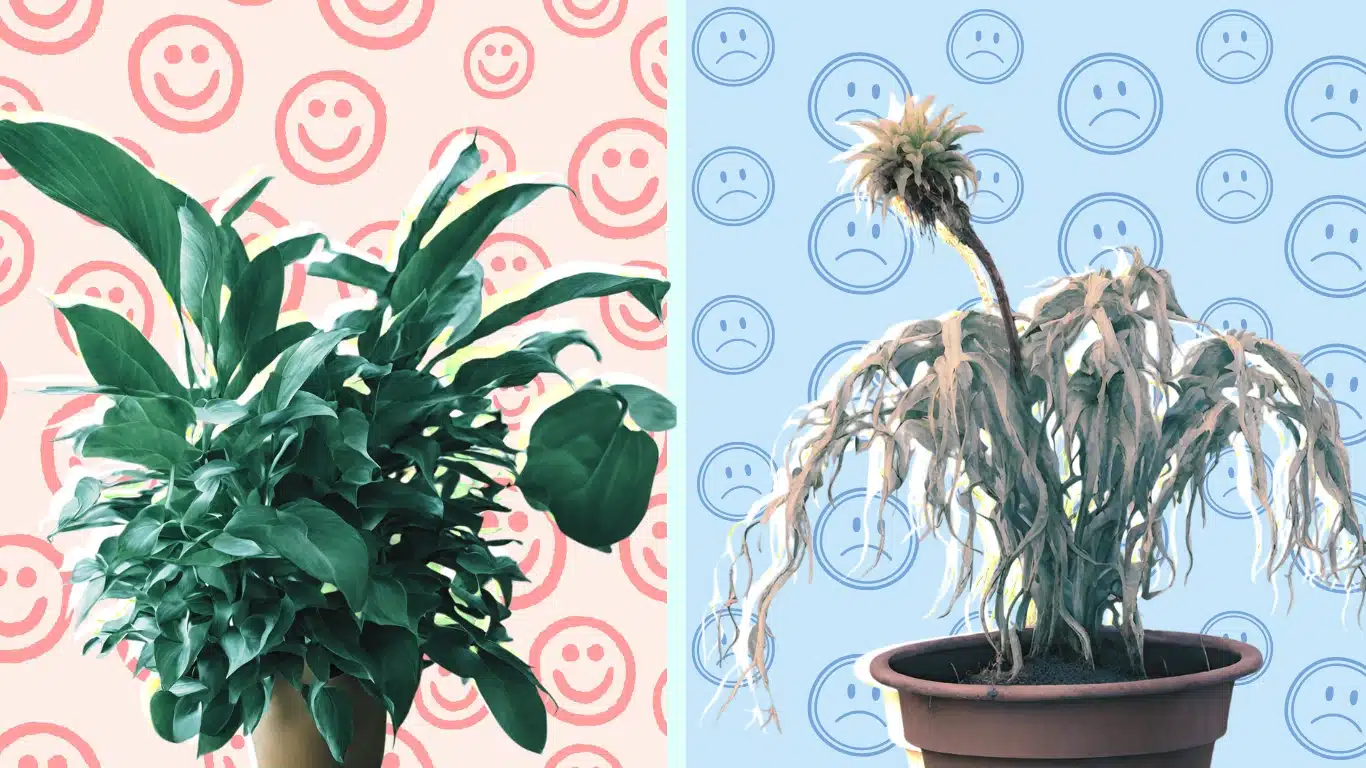Décoder les Signes d’une
Plante Heureuse vs une Plante en Mode ‘Bof’

En tant que parents de plantes, notre mission numéro un est de maintenir nos bébés verts heureux. Maintenant, le hic, c’est que ces plantes n’ont pas suivi de cours intensif de langues humaines, donc elles ne peuvent pas nous dire exactement comment elles se sentent.
C’est pourquoi nous allons vous aider à décoder le langage des plantes heureuses par rapport à celles qui pourraient être coincées dans les blues botaniques.
Communicating through foliage 🍃
Une plante heureuse présente des feuilles pleines de vitalité, souvent d’une couleur vibrante et uniforme avec une texture saine. En revanche, une plante triste peut avoir des feuilles tombantes, jaunissantes, voire qui chutent, indiquant un manque d’eau, de lumière, ou des problèmes avec le sol.
L’Art de la Posture 🌱
Observer la posture d’une plante peut en dire long sur son état émotionnel. Les plantes joyeuses se tiennent fièrement avec des tiges droites, tandis que les plantes tristes peuvent sembler flétries, comme si elles essayaient de se cacher. Un rempotage ou un changement d’emplacement peut être nécessaire pour égayer leur humeur.
Roots, the Foundation of Happiness 🌳
Plant roots are often overlooked but are crucial for their health. Healthy roots are white or brown, while sick roots may be soft, brownish, or show signs of rot. Proper soil drainage is essential for maintaining happy roots.
Subtle Flower Conversations 🌸
If your plant blooms, the flowers themselves can be indicators of happiness. Bright and well-formed flowers are positive signs. Faded petals or insufficient blooming may signal issues with nutrition or light.
The Dance of Leaves 💃
Certaines plantes réagissent aux stimuli externes en bougeant leurs feuilles. Une plante heureuse pourrait vous saluer en agitant doucement ses feuilles, tandis qu’une plante ‘meh’ pourrait sembler immobile. Assurez-vous que votre plante a suffisamment d’espace pour s’exprimer et reçoit de l’attention.
En comprenant le langage subtil des plantes, vous pouvez répondre à leurs besoins de manière plus efficace. Prenez le temps d’observer, d’interagir, et d’ajuster l’environnement de vos plantes, activez votre mode « chuchoteur » de plantes, car, après tout, une plante heureuse équivaut à un foyer heureux. 🏡😊



